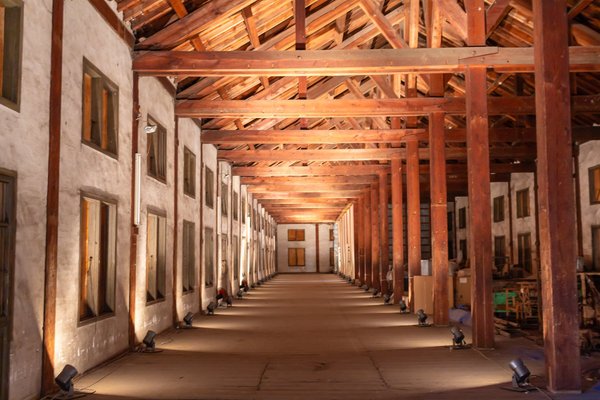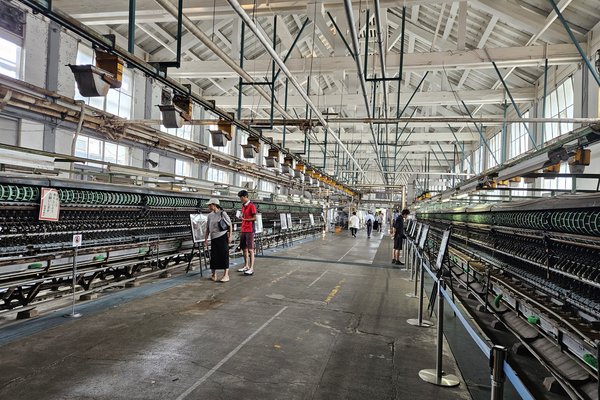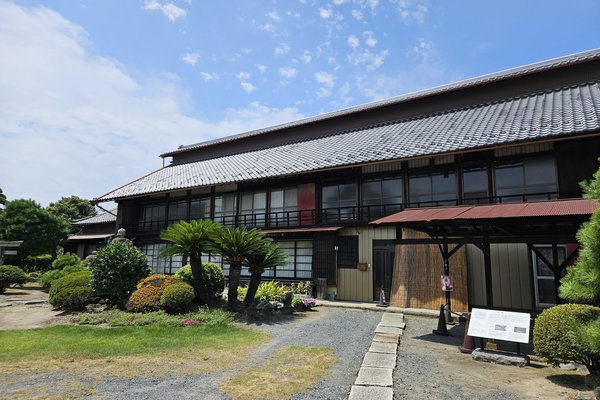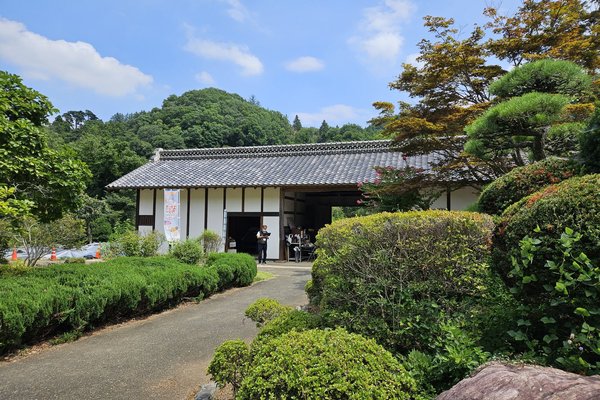Japan
Tomioka Silk Mill
The Tomioka Silk Mill is an early industrial complex that represents the spreading of Western technologies during Japan's Meiji period and Japan’s entry into the modern industrialised world.
The mill was dedicated to the mass production of raw silk and – due to the import of French machinery and industrial expertise – played an important role in the renewal of sericulture and the Japanese silk industry. Its industrial architectural ensemble combines both foreign and local elements.
Community Perspective: this former factory is well-suited to receive visitors, most of the original equipment was preserved and the machines are even covered by plastic. It’s an easy day trip from Tokyo, but be aware that the railway line from Takasaki to Tomioka is private and thus not covered by the Japan Rail Pass. With a car, you can also reach the sub-sites.
Site Info
Official Information
- Full Name
- Tomioka Silk Mill and Related Sites (ID: 1449)
- Country
- Japan
- Status
-
Inscribed 2014
Site history
History of Tomioka Silk Mill
- 2014: Inscribed
- Inscribed
- Type
- Cultural
- Criteria
- ii
- iv
Links
- UNESCO
- whc.unesco.org
- Official
-
- worldheritage.pref.gunma.jp — Official website Gunma Prefecture
- Related
-
- japan-guide.com — How to visit Takayama-sha Sericulture School
- tomioka-silk.jp — World Heritage promotion page
- japan-guide.com — How to visit Arafune Cold Storage
All Links
UNESCO.org
- whc.unesco.org — whc.unesco.org/
Official Website
- worldheritage.pref.gunma.jp — Official website Gunma Prefecture
Related Resources
- japan-guide.com — How to visit Takayama-sha Sericulture School
- tomioka-silk.jp — World Heritage promotion page
- japan-guide.com — How to visit Arafune Cold Storage
News Article
- Sept. 16, 2024 japannews.yomiuri.co.jp — Tomioka Silk Mill Faces Repair Cost Problem Due to Decline in Visitors
- Dec. 23, 2021 soranews24.com — World Heritage Site in Gunma struggling to crowdfund repair costs
- July 17, 2019 japantimes.co.jp — Japanese city struggles as its World Heritage sheen fades
- April 10, 2016 asahi.com — World Heritage silk mill offers ‘time travel’ to Meiji Era
- Jan. 20, 2016 ajw.asahi.com — Historic silk mill invites public to view its cocoon warehouses
Community Information
- Community Category
- Secular structure: Factories and industry
Travel Information
Tokyo Hotspot
Recent Connections
-
Perfect Inscriptions
2014 -
Pumping Stations
One of the buildings at the Tomioka Sil… -
Irrigation and drainage
"The component area of Tomioka Silk Mil…
Connections of Tomioka Silk Mill
- Trivia
-
-
Built or owned by French
"It was the architect Edmond Bastien (1839-1888), already employed to build Yokosuka Arsenal, another Franco-Japanese cooperation project, who drew up the plans and supervised the construction (1872)." (AB ev)
-
- History
-
-
Fusion
Crit iv: "The extent of the plant, from its initial design, and the deliberate adoption of the best Western techniques illustrate a decisive period for the spread of industrial methods to Japan and the Far East. Its large, late 19th century buildings provide an eminent example of the emergence of a style of industrial architecture specific to Japan, combining foreign and local elements. " (OUV)
-
- Architecture
-
-
Timber framing
"The building has a wooden frame and the infill walls are in red brick. The timber roof frame is of European type, with a rigid structure, which was an innovation in Japan." (AB ev) -
Brick architecture
"the infill walls are in red brick" (AB ev)
-
- World Heritage Process
-
-
Perfect Inscriptions
2014
-
- Human Activity
-
-
Irrigation and drainage
"The component area of Tomioka Silk Mill is composed of the original factory premises at the time of establishment and surrounding water drains together with the lot later extended for silkworm egg production." An example of drainage in the Tomioka Mill is the brick drain. "Built in 1872, this covered brick drain was used not only for rain water runoff from the buildings, but also for discharge of water used for silk-reeling". (Nomination file, p. 17, 49) -
Textiles
"the first appearance in the country of the large functional and mechanised factory for the mass production of textiles" (AB ev) -
Silk Manufacture
"Tomioka and its related sites form an outstanding example of an integrated ensemble for the mass production of raw silk." (OUV)
-
- Constructions
-
-
Pumping Stations
One of the buildings at the Tomioka Silk Mill is a "pump house for industrial water drawn from the Kabura-gawa River". (Nomination file, p. 25)
-
- Timeline
-
-
Built in the 19th Century
Mill dates from 1872
-
- WHS Hotspots
-
-
Tokyo Hotspot
1h45 by train
-
- Science and Technology
-
-
Steam technology
"The technical annexes are functionally arranged around this building, notably the six steam generating boilers, five for boiling cocoons and one to provide the motive power." (AB ev) -
Innovations in Agriculture
Tajima Yahei sericulture farm: "It bears the name of the agronomist who developed a new sericulture breeding method here known as seiryo-iku. It was a prototype farm, a place of experimentation and a school." (AB Ev) – The far also "[d]eveloped an innovative silkworm-raising room structure utilizing a ventilation system (Prototype of modern sericulture farmhouses)". (Nomination file, p. 55)
-
News
- japannews.yomiuri.co.jp 09/16/2024
- Tomioka Silk Mill Faces Repair Cos…
- soranews24.com 12/23/2021
- World Heritage Site in Gunma strug…
- japantimes.co.jp 07/17/2019
- Japanese city struggles as its Wor…
Recent Visitors
Visitors of Tomioka Silk Mill
- AC
- Adam Hancock
- Alexander Barabanov
- Alexander Lehmann
- Alexander Parsons
- Alex Goh
- Astraftis
- Atila Ege
- Bill Koo
- Bill Maurmann
- Carlo Sarion
- Celina Nanbara
- chenboada
- Christoph
- Christravelblog
- CugelVance
- cutecid
- cwthong
- Daniel Chazad
- Dimitar Krastev
- Elisabeth Fransisca Situmorang
- Els Slots
- Errol Neo
- Eva Kisgyorgy
- Fan Yibo
- Frédéric M
- Frederik Dawson
- GeorgeIng61
- Harry Mitsidis
- H Beswick
- henrik_hannfors
- henryjiao18
- Hubert
- Iain Jackson
- Jasam
- Joel on the Road
- Joyce van Soest
- Kasia M.
- Kasper
- Kurt Lauer
- Loic Pedras
- Luke LOU
- MaYumin
- M.HATADA
- Michael Novins
- Michael Turtle
- Miguel Marquez
- Naim Y
- nan
- Nicolas
- Nihal Ege
- NoahFranc
- Patrik
- Pchxiao
- Philipp Peterer
- Randi Thomsen
- ReallyDeepThoughts
- Shandos Cleaver
- Slavi
- sncjob
- Ssong.x
- Stanislaw Warwas
- Stijn
- Svein Elias
- Szucs Tamas
- Taotao Chen
- Thomas Buechler
- Thorben
- triath
- Tsunami
- Valentina
- Vincent Cheung
- Westwards
- Wojciech Fedoruk
- Xiong Wei
- Xiquinho Silva
- Yongcheng Liu
- Zoë Sheng
- Zos M
Community Reviews
Show full reviews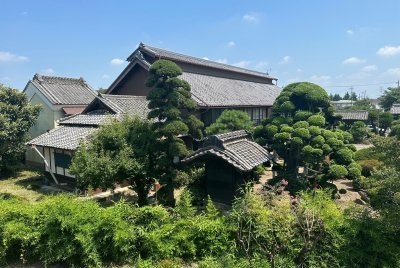
It’s satisfying being positively surprised by a site, like we did on one of this lesser-known sub site of Tomioka Silk Mill!
According to our Japan quest of July 2023 we were going to visit Tomioka round halfway in our Honshu train crossing from northeast to southwest. But as the weather forecast didn’t agree, we skipped the site and went for nicer weather further southwest. Thus, this site was visited on our last full day in Japan as a day trip from Tokio. Our Japan Rail Pass took us easily to Takasaki. We considered using the non-JRP railway to Tomioka, but since we were two and we wanted to visit all the four sites we chose a rental car. We were certain that six hours with a car would be sufficient for the task, but … we were so wrong.
We started by aiming for the easternmost sub site first, the Tajima Yahei Sericulture Farm.
To our knowledge this would be pretty much a “closed site” and we would have to settle for some distant outdoor pictures before we moved on. The trip was about 24 km’s, but it took almost an hour because of small and winding roads. Arriving at the site we followed the parking sign and found a not to big parking area (almost empty). A guard gave us instructions and then he spoke on a walkie-talkie. We walked the 100 m to the gate of this property and there we were welcomed by …
Keep reading 0 comments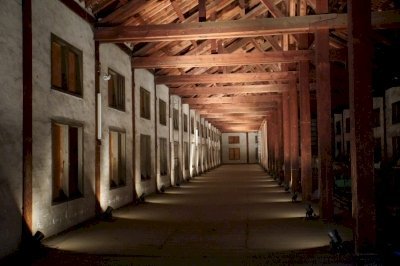
All of the previous reviewers visited only one of the four locations that make up this WHS, the main site: the Tomioka Silk Mill. And to tell it right away: I did it the same way.It doesn’t seem to be very difficult to visit at least one of the other locations, the distances from Tomioka are between 25 and 45 kilometres. However, this website estimates travel times from the silk mill by public transport between 75 and 100 minutes, including taxi rides and/or walking. So quite a lot of effort to see very little: a few empty shelves where the silkworm cocoons were raised (Takayama-sha Sericulture School), a farmhouse from the outside (Tajima Yahei Sericulture Farm), and a few foundation walls (Arafune Cold Storage). Thus, I decided to skip the other locations in favour of some non-WHS stuff in Tokyo.
But now to the main thing:The Tomioka Silk Mill was built in the early years of the Meiji restoration and represents a milestone in the transformation of Japan into an industrialized nation. In this regard, it is closely related to the "Sites of Japan's Meiji Industrial Revolution" which were inscribed in the WH list only one year after Tomioka. Apart from the obvious differences to coal mining and steel production, Tomioka deserves its own inscription because it illustrates the fusion of Japanese tradition and modern European technology. Through this modernisation the mass production of silk was established and Japan became the leading export nation for raw silk.
The …
Keep reading 0 comments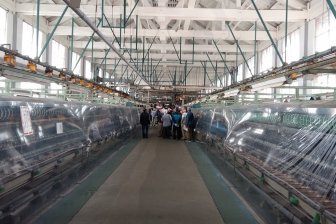
The Tomioka Silk Mill was built during the Meiji Restoration. As you may know the Meiji Restoration refers to Japan in the 2nd half of the 19th century. Japan had been living in isolation for centuries. Due to military incursions by the Americans Japan came to realize that they needed to catch up fast with the rest of the world. While the general industrial advances are covered by the Sites of the Meiji Industrial Revolution Tomioka is focused on one specific factory for silk production.
The factory itself was built with support from French engineers. Walking around it does have a colonial feel to it, especially with regards to the living quarters. The site also encompasses three other locations related to silk production and tries to provide a full picture. As these are further off, I did not manage to visit, though.
Operations at the site ceased rather recently (1989) and most of the original equipment was preserved. So the site feels authentic and complete. With the very unique focus on industrial silk production I think this is a valuable addition to the list, although a niche one.
Getting There
I visited Tomioka as a stop over on my way from Tokyo to Kanazawa. I had to change in Takasaki where I deposited my luggage at the station. Be aware that the railways from Takasaki to Tomioka is not included in the Japan Rail Pass so you will have to get a separate ticket. From Tomioka …
Keep reading 0 comments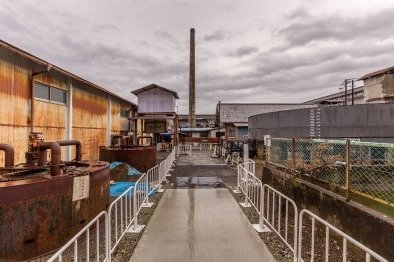
I visited the Tomioka Silk Mill as a day trip from Tokyo including a visit to the Snow Monkeys 1 hour further away towards Nagano.
I haven't seen many industrial UNESCO sites yet and I must say that I really enjoyed visiting the Tomioka Silk Mill. Maybe some would say it's not interesting and I can understand why. There is just a small exibition, one building with the (modern) reeling machines, and everything else can just be seen from the outside. My kids were with me and I could only convince them to join me if we also included the Snow Monkeys in Jigokudani on the Japan itinerary we were following.
I drove by car as it was more efficient for the day. Parking is available (paid) just 200 meters from the entrance. As with most place in Japan in found the entrance quite steep but then, they do good maintenance. One of the large storage halls was completely covered and taken apart plank by plank. They really do a good job preserving all as with the reeling machines. Coverd with plastic for the most part! Gave a bit of a sterile feeling.
I do understand why it's UNESCO and I think if they open up a bit more of the buildings. Maybe the managers house with furnuture of that time it will make it even more interesting. If you're in Tokyo and want to get out this is a site worth checking out for sure!
Keep reading 0 comments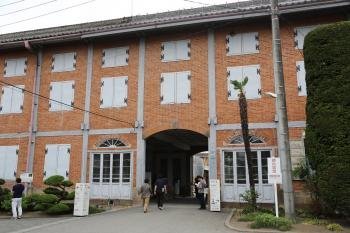
Visited this site in May 2017 as a pleasant detour from Tokyo (and using some private railway line not subject to the wonderful Japan Rail Pass).
The cost was 1,000 yen entrance + 200 yen audioguide and 200 yen conservation viewing desk.
The mill was completed in 1872 after local government decided to import mechanized Western technologies of silk processing. Technical advisers from France were invited, while trainees were hired from local female workers. Other factories using Tomioka mill model were constructed around the country afterwards. Introduction of mass production technologies led to modernization of Japanese economy.
The mill have been producing raw silk till 1987 when all the reeling machines were preserved in the original state.
In overall I liked the whole cluster of buildings, which are interesting mix of colonial style constructions and Japanese traditional design features. Many industrial architectural innovations already known in Europe were first introduced in Japan in this mill.
I was lucky to visit on Sunday, when there are various workshops and exhibitions involving demonstrations of how the silk was gathered from the cocoons, very interesting process.
The funniest fact about the mill: young female Japanese workers were reluctant to work at the mill, because there were rumours that the French were drinking ... blood!!! All this was because the locals saw French drinking wine, something they never saw before.
For me the site deserves its status due to unique combination of industrial cooperation at its very beginning, good preservation level and outstanding example …
Keep reading 0 comments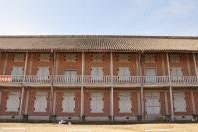
Since the industrial heritage is one of the most underrepresented categories of Asian World Heritage Sites, Japan has started to propose its industrial heritages to fill the gap, Tomioka Silk Mill (Tomioka Seishijou), the first state owned western-styled factory. Almost unknown to foreigners, the factory has been a landmark of Gunma Prefecture since the silk mill is quite famous among Japanese especially in school history class. As part of my 2012 Japan trip, I took the Shinkansen from Tokyo to Takasaki and then the private Joshin Line to Tomioka. From the train station, there was a color line on the road show direction to the mill, the same system uses in many hospitals! After walked for about 15 minutes, I was at the entrance of the complex of large, long brick building. The building turned out to be the eastern cocoon storage, inside there was small exhibition of how to make silk, sadly that there was no English at all. Then I went to see the twin western cocoon storage which was closed for renovation. These two storages were quite the highlight of the mill as they were considered to be the first brick factory building of Japan, the building was done by French and the roof by the Japanese, so it was quite interesting to see the European brick building topped with Japanese tiled roof.
After the storage complex, I went to the silk reeling machine hall, the machine was wrapped by dusty plastic sheet, the very surprising …
Keep reading 0 comments
